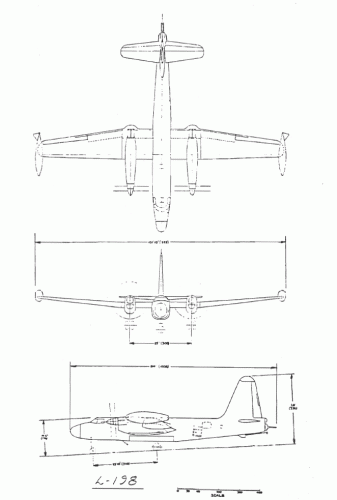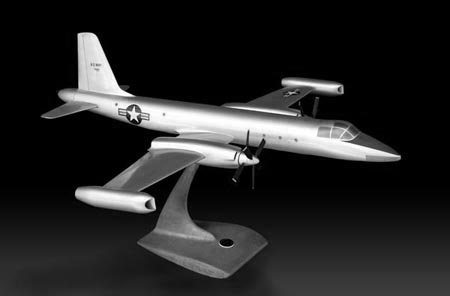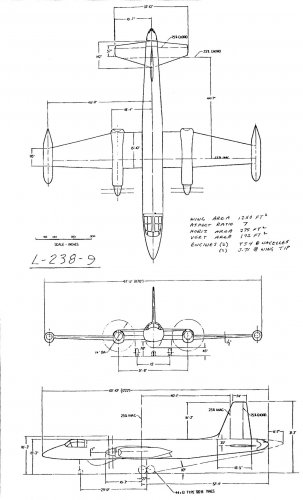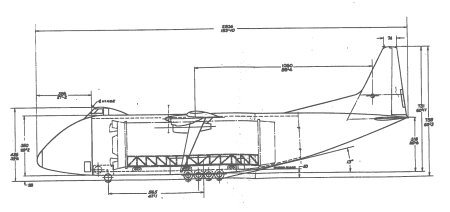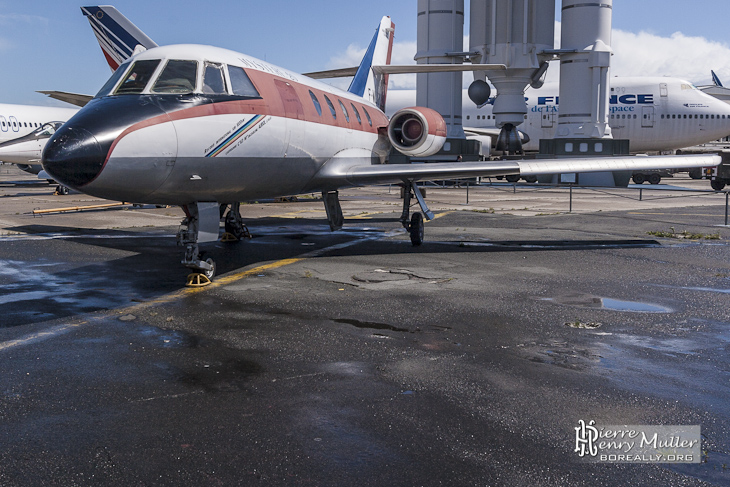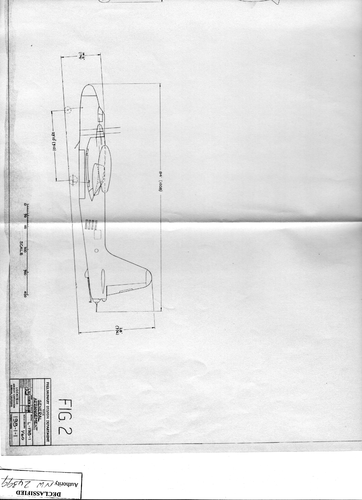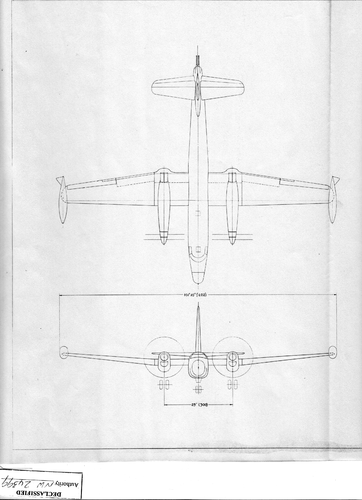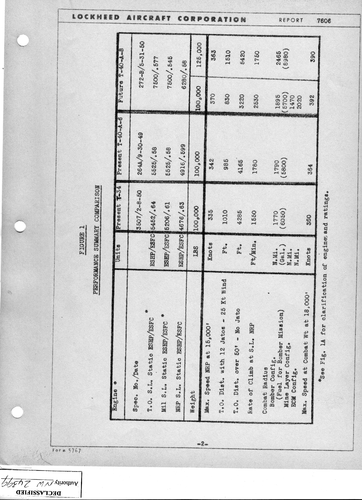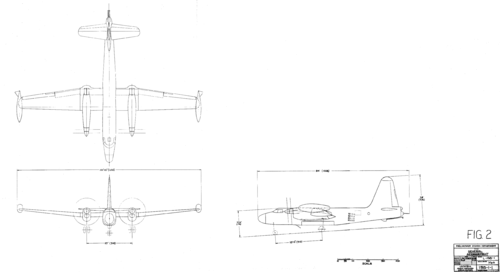I apologize for not keeping up but haven’t been on the site for a very long time. Enclosed are two views of the proposed T40 powered P2V and a data sheet from the archives.
This is primarily to correct the observations of Stargazer2006 and Circle-5 concerning the T-40 engine but let me digress a bit. On one or more of theses threads, have been comments about how errors in aviation history are passed on because authors just repeat what they’ve read rather than doing research. For years the Northrop XP-56 was shown a length of 27’ 6” in all articles and references. Even William Greens series of fighter books used this dimension. When vacuform and resin kits started coming out of the Czech Republic I was in contact with several of the producers and the XP-56 they sent me didn’t “look right” but measured out as 27’ 6 “. I then got “NORTHROP An Aeronautical History” by Fred Anderson published by Northrop Corporation (1976). Guess what…...he showed the XP-56 length at 23’ 6”! What to do? I wrote Robert Mikish (RIP) at the NASM in DC and asked if he would measure the fuselage resting at Silver Hills panel by panel, which he did and low and behold is was 23’ 6”. I wrote the Czech’s and they redid the kit.
The same has been true of the story of the Allison T38/T40 family of engines. I have spent the last 45 years researching these engines and the aircraft they powered or were to power. I’ll skip a lot and get to the meat. When Allison began work on the dual power plant engine it designated it the Model 500. After they knew it was to progress further they designated one power section the Model 501 for speedier development. The Navy did it in reverse since they only got hard data on the single power section first they submitted a request to the Army Air Force (who managed all engine designations) and it was assigned T38 (all even numbers being Navy programs all odd numbers being Army Air Force). When Allison was able to provide hard engineering data on the dual powered engine the Navy requested another designation and was given T40. Please note that they are reversed sequentially, the Model 500 is the T40 and the Model 501 is the T38. The Allison plant was an Air Force managed plant. Now if you explore the T54 and the T56 you will see that they are still listed by Allison as the Model 500 and 501. Why??? Because they are. As a budget restriction and with the T40 going into production the Navy terminated the contract for the T38 and no longer financed it. This posed a problem for the Navy later as the T40 design was improved and it was decided the Navy also needed T38’s for several helicopter programs but that’s another story. The only difference between the T38 and T56 was the deletion of three of the compressor stages from 17 to 14 and the deletion of the individual combustion chamber and fuel nozzles from eight to six. But the only place you will count six on a T56 is on the Renwal T-56 plastic model which has six combustion chambers as the actual T56 shrouded them all in a single circular casing.
Your thread on the C-130 competition notes all ten contenders but one were T38 or T40 powered yet it flew with the T-56! I have yet to find out if the now Air Force resubmitted for the T56 destination or the Navy did at the Air Force’s request. But just like the B-29/B50 thing, its easier to start a new program than restart an old one. It being that the advanced T38 was relabeled the T56 hence the T40 could not remain the T40 with T56 power sections so was given the T54 designation.
Just like the aircraft, P-51A, B, C, D & H are all Mustangs, the same goes with the engines. The designation stays the same with just variations like the Model 500-A-2, 500-A-4, 500-C13 changed as the power output is increased through the use of new materials like carbon seals, revised air channels, deletion of compressor stages to a more optimism number, etc.
The Rolls Royce (Allison) Heritage Trust group in Indianapolis is made up primarily of retired Allison engineers. When I said I thought the 500-A-8 was the same as the T54 the president started laughing and said, “of course it is, but few people know it.”
Retired Allison/Rolls Royce engineer John Leonard of the RR Heritage Trust put out an excellent book titled “The Allison Engine Catalog” (2008). I quote from page 61: “The T54 was originally called the T40-A-8 or the Allison Model 500-C. All T40s were Allison model 500-A or 500-B. The T40 and T56 were similar except the T54 used the T56 power sections and thus was more powerful.” It was all one program with four designations the difference being either one or two identical power sections.
The death kneel was too much new technology into one engine; electronic fuel controls, high speed dual rotation propellers, synthetic oils, complex gear boxes. Someone will say ‘but the British did it. NO the British did not do it. The dual rotation propellers such as on the ASW Gannet have a gear box where each engine drives a single propeller. Loose an engine – loose a propeller. No meshing between engines or propellers. The Allison gearbox took two drive shafts of 13,820 rpm and ran them through a gear box that then merged them and ran them to dual propellers. I could go on but enough for this thread.

